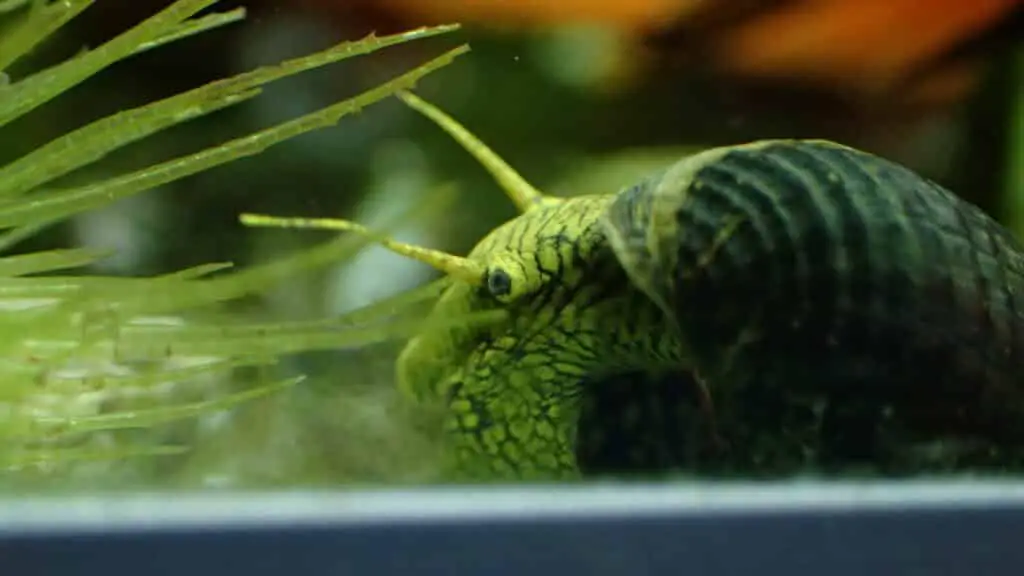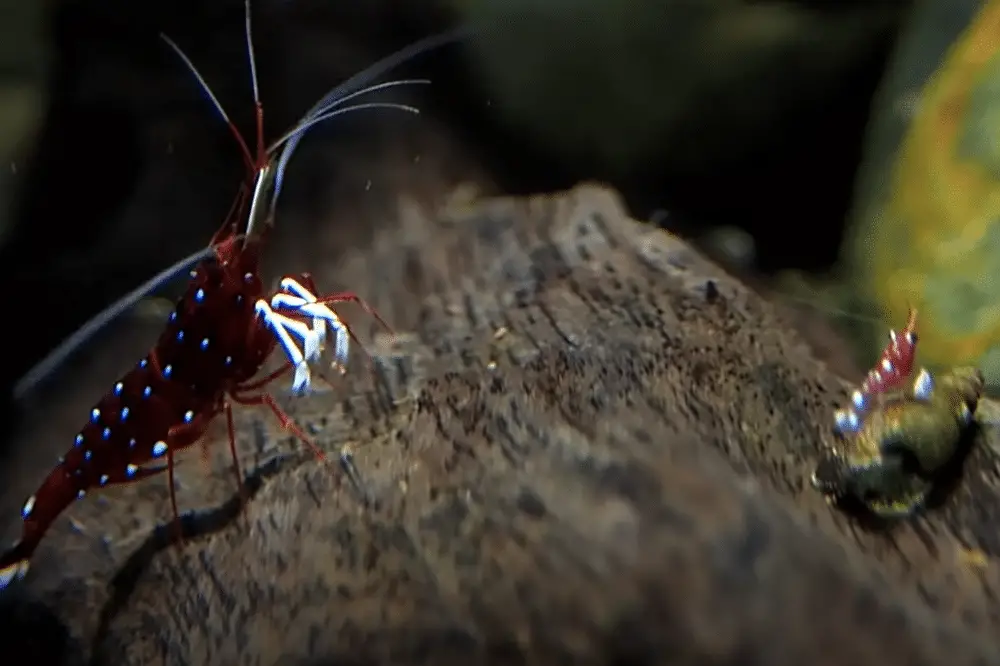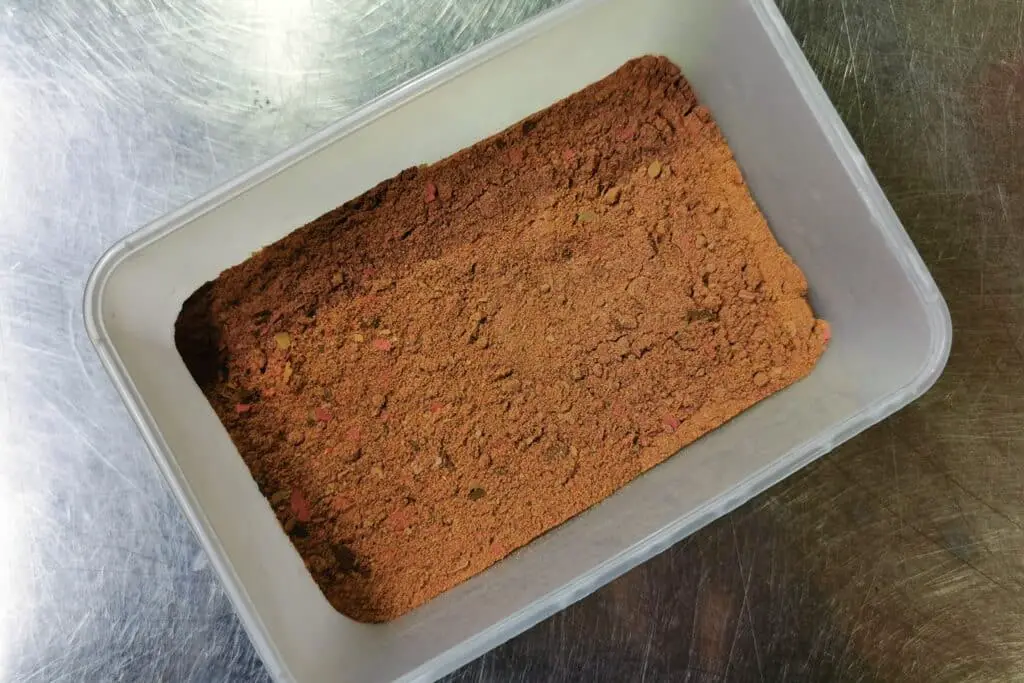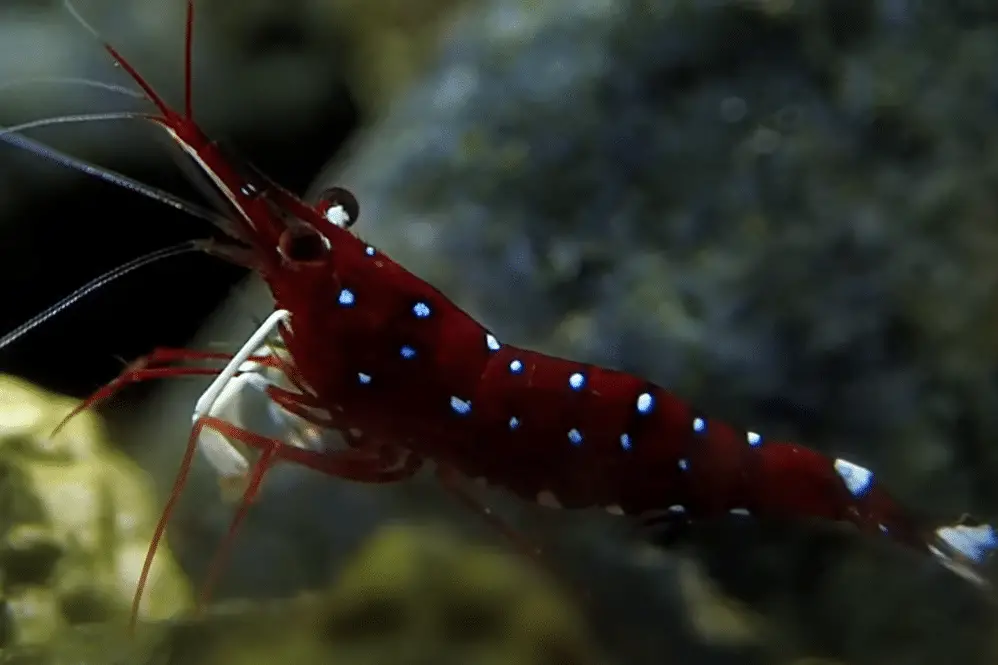Ever wondered how to breed the vibrant Cardinal Sulawesi shrimp? Or perhaps you’ve tried before and faced challenges? You’re not alone. Many shrimp keepers find breeding these fascinating creatures a bit tricky, but with the right knowledge and approach, it’s entirely possible. Let’s dive into the world of Cardinal Sulawesi shrimp breeding and unravel the mystery together.
Breeding Cardinal Sulawesi shrimp requires a specific environment, a balanced diet, and careful monitoring of water parameters. Maintaining a stable water temperature is crucial for the health and well-being of Cardinal Sulawesi shrimp.The ideal water temperature range for these shrimp is between 26°C and 28°C (78.8°F to 82.4°F), with a temperature of 28°C being the most suitable.
As a shrimp keeper, I’ve had my fair share of challenges when it comes to breeding Cardinal Sulawesi shrimp. These vibrant creatures, native to Lake Matano in Sulawesi, Indonesia, are a delight to watch but can be quite demanding to breed. They require specific water parameters, a stable environment, and a balanced diet to thrive. Any slight variation in their environment can cause stress and illness, leading to decreased breeding and even death.
I remember when I first started, I struggled with maintaining the ideal water parameters. The pH, water hardness, and other parameters seemed to fluctuate no matter what I did. It was a steep learning curve, but I learned the importance of regular monitoring and gradual adjustments over time.
Over the years, I’ve also learned that the right tank setup and maintenance are crucial in successful breeding. Every detail matters from choosing the right aquarium size to ensuring proper filtration and regular maintenance.
In this guide, I’ll share my experiences and the knowledge I’ve gained over the years on how to breed Cardinal Sulawesi shrimp. Whether you’re a beginner or an experienced shrimp keeper, I hope this guide will provide you with valuable insights and practical tips to help you on your shrimp breeding journey.
Where do they come from?
Lake Matano is a large, deep lake located in the Sulawesi island of Indonesia. It is the fifth-deepest lake in the world, with a maximum depth of 590 meters. The lake is known for its clear, pristine water and unique biodiversity, including several endemic species such as Cardinal Sulawesi shrimp.
The lake’s water is naturally rich in minerals and has a high alkalinity, which contributes to the ideal water parameters for Cardinal Sulawesi shrimp. The lake is also an important source of freshwater for local communities, and its water is used for various purposes such as irrigation, aquaculture, and hydroelectric power generation.
In recent years, there have been concerns about pollution and overfishing in Lake Matano, highlighting the need for sustainable management practices to protect its unique ecosystem and biodiversity.

Water Parameters
Cardinal Sulawesi shrimp require a specific pH range to survive and thrive in captivity. The ideal pH range for these shrimp is between 7.0 and 8.5, with a pH of 7.5 being the most suitable. It is important to maintain a stable pH level, as sudden changes can cause stress and illness in these sensitive shrimp.
It is also important to note that Cardinal Sulawesi shrimp are sensitive to low pH levels and can suffer from acidification of the water. In addition, the use of certain types of substrates or decorations, such as driftwood or rocks that release tannins or lower pH, can also affect the pH of the water.
or lower pH, can also affect the pH of the water.
Therefore, it is recommended to use inert substrates and decorations that do not affect the pH level of the water or to test and monitor the pH level regularly if such decorations are used.
It is also important to avoid using chemicals to adjust the pH level of the water, as this can cause sudden changes that can be harmful to the shrimp. Instead, it is recommended to adjust the pH level gradually over time by using natural methods, such as adding crushed coral or limestone to the aquarium or by using commercial buffering products designed specifically for freshwater shrimp.
Water hardness is an important factor to consider when keeping Cardinal Sulawesi shrimp in captivity. Water hardness refers to the concentration of minerals, such as calcium and magnesium, in the water. These minerals can affect the pH level of the water, as well as other important water parameters, such as conductivity and alkalinity.
Cardinal Sulawesi shrimp require a specific range of water hardness to survive and thrive. The ideal water hardness for these shrimp is between 5 and 12 dGH (degrees of general hardness), with a value of around 8 dGH being the most suitable. It is important to maintain a stable water hardness level, as sudden changes can cause stress and illness in these sensitive shrimp.
Maintaining a stable water hardness level can also help to prevent molting issues in Cardinal Sulawesi shrimp. These shrimp require calcium and other minerals to build and maintain their exoskeleton, and a lack of these minerals can lead to issues with molting, such as incomplete molts or soft exoskeletons.
to build and maintain their exoskeleton, and a lack of these minerals can lead to issues with molting, such as incomplete molts or soft exoskeletons.
To maintain the ideal water hardness for Cardinal Sulawesi shrimp, it is recommended to use a good quality buffer , add crushed coral or limestone to the aquarium, or use commercial buffering products designed specifically for freshwater shrimp.
, add crushed coral or limestone to the aquarium, or use commercial buffering products designed specifically for freshwater shrimp.

It is also important to monitor the water hardness level regularly and adjust it as needed to ensure a stable and healthy environment for your shrimp. In the next section, we will explore other important water parameters to consider when keeping Cardinal Sulawesi shrimp in captivity.
In addition to pH and water hardness, there are several other important water parameters to consider when keeping Cardinal Sulawesi shrimp in captivity.
- Ammonia Levels: Ammonia is a toxic substance that can be harmful to shrimp and can quickly build up in the aquarium if not properly managed. It is important to maintain low levels of ammonia in the water by performing regular water changes and avoiding overfeeding.
- Nitrite and Nitrate Levels: Nitrite and nitrate are byproducts of the nitrogen cycle in the aquarium
 and can be harmful to shrimp if their levels are too high. It is important to monitor these levels regularly and keep them in check by performing regular water changes and maintaining a healthy bacterial colony in the aquarium.
and can be harmful to shrimp if their levels are too high. It is important to monitor these levels regularly and keep them in check by performing regular water changes and maintaining a healthy bacterial colony in the aquarium. - Conductivity: Conductivity is a measure of the concentration of ions in the water, and it can affect the osmoregulation of the shrimp. Cardinal Sulawesi shrimp prefer a moderate level of conductivity, with a range of 200 to 400 µS/cm being suitable. It is important to monitor conductivity levels regularly and adjust them as needed to ensure a stable and healthy environment for your shrimp.

Temperature Requirements
Water temperature is critical to consider when keeping Cardinal Sulawesi shrimp in captivity. These shrimp require a specific range of water temperatures to survive and thrive. The ideal water temperature range for these shrimp is between 26°C and 28°C (78.8°F to 82.4°F), with a temperature of 28°C being the most suitable.
A heater and a thermometer can help maintain a consistent water temperature and ensure that the aquarium remains within the ideal temperature range for these shrimp.
It is also important to note that Cardinal Sulawesi shrimp are sensitive to low levels of dissolved oxygen in the water, and higher water temperatures can lead to a decrease in dissolved oxygen.
Therefore, it is important to ensure that the aquarium is well-oxygenated by using a high-quality air pump and airstone, or by providing other forms of water movement to increase the oxygen levels in the water.
In addition to maintaining a stable water temperature, it is essential to monitor the water temperature regularly and to make adjustments as needed to ensure a stable and healthy environment for your Cardinal Sulawesi shrimp.
Importance of using a heater to maintain a consistent temperature
Maintaining a stable water temperature is crucial for the health and well-being of Cardinal Sulawesi shrimp. These shrimp require a specific range of water temperature to survive and thrive, and sudden temperature changes can cause stress and illness.
Using a heater is essential for maintaining a consistent water temperature in the aquarium. The heater should be properly sized for the aquarium and be of high quality to ensure reliability and accuracy.
It is also important to place the heater in a location where the water flow is strong enough to distribute the heated water throughout the aquarium, but not so strong that it disrupts the shrimp’s natural behavior or causes a high temperature gradient in the aquarium.
In addition to using a heater, it is also important to use a thermometer to monitor the water temperature regularly. This will allow you to detect any changes in temperature and to make adjustments as needed to ensure that the water temperature remains within the ideal range for your Cardinal Sulawesi shrimp.
One important consideration when using a heater is the potential for temperature fluctuations due to power outages or equipment failures. This can be especially problematic in warm climates where the ambient temperature can also affect the aquarium water temperature.
To mitigate this risk, it is recommended to use a heater controller, which can monitor and adjust the temperature of the water automatically in the event of a power outage or equipment failure.
Benefits of using a heater controller
A heater controller is a device that can be used to regulate the temperature of the water in the aquarium. Using a heater controller can offer several benefits when keeping Cardinal Sulawesi shrimp in captivity:
in captivity:
- Consistent Temperature: A heater controller can help to maintain a consistent water temperature in the aquarium, which is essential for the health and well-being of Cardinal Sulawesi shrimp. It can adjust the temperature automatically in the event of a power outage or equipment failure, ensuring that the water temperature remains within the ideal range for these shrimp.
- Safety: A heater controller can help to prevent temperature fluctuations, which can be harmful to Cardinal Sulawesi shrimp. In addition, it can also prevent the water from overheating, which can be a safety hazard and can lead to the death of the shrimp.
- Energy Efficiency: A heater controller can help to save energy by reducing the amount of time that the heater needs to run. It can turn the heater on and off as needed to maintain the desired water temperature, which can help to reduce the overall energy consumption of the aquarium.
- Ease of Use: A heater controller is easy to use and can be set up quickly. It typically includes a digital display that shows the current water temperature and can be adjusted using simple controls.
using a heater controller can help to maintain a stable and healthy environment for Cardinal Sulawesi shrimp by regulating the water temperature and preventing temperature fluctuations. It is a useful tool for aquarists who want to ensure their shrimp are healthy and thriving.

Importance of proper filtration
Proper filtration is crucial for maintaining good water quality and ensuring the health of Cardinal Sulawesi shrimp. Filtration is essential for removing excess food, waste, and other organic matter from the water, which can cause harmful ammonia and nitrite buildup.
In addition, filtration helps to maintain a stable and healthy environment for the shrimp by promoting the growth of beneficial bacteria that help to break down harmful compounds in the water.
When choosing a filter for your aquarium, it is important to choose a filter that is appropriate for the size of the aquarium and can handle the bio-load of the shrimp and any other aquatic creatures in the aquarium.
A filter with a moderate flow rate can benefit Cardinal Sulawesi shrimp, as it can help maintain good water circulation and oxygenation in the aquarium. However, it is essential to ensure that the water flow is not too strong, as this can disrupt the shrimp’s natural behavior and cause stress.
Maintaining good water quality is essential for the health and well-being of Cardinal Sulawesi shrimp. Regular maintenance is necessary to ensure that the water in the aquarium remains within the ideal range of parameters for these sensitive shrimp. Here are some important maintenance tasks to consider:
In addition to selecting the right type of filter, it is vital to clean and maintain the filter regularly to ensure that it is working properly. This includes regular water changes, cleaning the filter media, and replacing the filter media as needed.
Monitoring the water quality regularly is also essential, using a test kit to check for levels of ammonia, nitrite, nitrate, and other important water parameters.
to check for levels of ammonia, nitrite, nitrate, and other important water parameters.
Proper filtration is essential for maintaining Cardinal Sulawesi shrimp’s stable and healthy environment. By choosing the right filter and maintaining it regularly, you can help to ensure that your shrimp remain healthy and thrive in captivity.
Maintaining water quality through regular maintenance
- Water Changes: Regular water changes are crucial for maintaining good water quality in the aquarium. The frequency and volume of water changes will depend on the size of the aquarium, the number of shrimp and other aquatic creatures, and the filtration system. As a general rule, it is recommended to perform a 10-20% water change once a week to remove excess nutrients, organic matter, and other pollutants from the water.
- Testing Water Parameters: Regular testing of the water parameters is important for monitoring the health of the aquarium and the shrimp. It is recommended to test the water at least once a week using a test kit to measure parameters such as pH, water hardness, ammonia, nitrite, nitrate, and conductivity. This will help to identify any changes in the water quality and allow for prompt corrective action.
- Adjusting Water Chemistry as Needed: If the test results indicate that the water parameters are outside the ideal range for Cardinal Sulawesi shrimp, it may be necessary to adjust the water chemistry. This can be done by adding commercial buffering products, adjusting the water hardness using crushed coral or limestone, or adding other minerals or supplements to the water. It is important to make these adjustments gradually over time to avoid sudden changes that can be harmful to the shrimp.
By performing regular maintenance tasks such as water changes, testing the water parameters, and adjusting the water chemistry as needed, you can maintain good water quality in the aquarium and provide a stable and healthy environment for Cardinal Sulawesi shrimp.

Feeding and Nutrition
Cardinal Sulawesi shrimp have a unique diet including plant and animal matter. To ensure that these shrimp remain healthy and thrive in captivity, providing a varied diet that meets their nutritional requirements is important.
- Overview of Cardinal Sulawesi Shrimp’s Diet: In their natural habitat, Cardinal Sulawesi shrimp feed
 on a variety of plant and animal matter, including algae, detritus, small invertebrates, and microorganisms. In captivity, they can be fed a variety of foods, including algae wafers, shrimp pellets, blanched vegetables, and live or frozen foods such as brine shrimp, daphnia, and bloodworms.
on a variety of plant and animal matter, including algae, detritus, small invertebrates, and microorganisms. In captivity, they can be fed a variety of foods, including algae wafers, shrimp pellets, blanched vegetables, and live or frozen foods such as brine shrimp, daphnia, and bloodworms. - Importance of Providing a Varied Diet: Providing a varied diet is important for meeting the nutritional needs of Cardinal Sulawesi shrimp. A varied diet can help to prevent nutritional deficiencies and ensure that the shrimp receive all the necessary vitamins and minerals for good health.
- Feeding Frequency and Amounts: Cardinal Sulawesi shrimp should be fed small amounts of food several times a day. Overfeeding can lead to excess nutrients in the water, which can cause water quality issues and harm the shrimp. It is recommended to feed the shrimp as much as they can consume in a few hours, and to remove any uneaten food after feeding to avoid polluting the water.
It is also worth noting that rabbit snails can be a good addition to an aquarium with Cardinal Sulawesi shrimp. Rabbit snails are peaceful and do not compete with the shrimp for food. They can also help to clean up excess food and other debris in the aquarium, which can help to maintain good water quality.
with Cardinal Sulawesi shrimp. Rabbit snails are peaceful and do not compete with the shrimp for food. They can also help to clean up excess food and other debris in the aquarium, which can help to maintain good water quality.

Breeding Cardinal Sulawesi Shrimp
Breeding Cardinal Sulawesi shrimp can be a rewarding experience for aquarists. These shrimp are relatively easy to breed
can be a rewarding experience for aquarists. These shrimp are relatively easy to breed in captivity, and with the right environment and care, they can produce large numbers of offspring. Here are some important considerations for breeding Cardinal Sulawesi shrimp:
in captivity, and with the right environment and care, they can produce large numbers of offspring. Here are some important considerations for breeding Cardinal Sulawesi shrimp:
Cardinal Sulawesi shrimp are sexually dimorphic, with the males being smaller and more slender than the females. Breeding usually occurs when the female molts and releases pheromones that attract males. After mating, the female will carry the fertilized eggs under her tail until they hatch into larvae.
To encourage breeding, it is important to provide a suitable environment for Cardinal Sulawesi shrimp. This includes maintaining stable water parameters, providing plenty of hiding places, and ensuring that the aquarium is well-oxygenated.
It is also important to provide a balanced diet and to avoid overfeeding, as excess nutrients in the water can harm the breeding process.
After hatching, the larvae will require special care to survive. They are extremely small and vulnerable and will require a special diet of infusoria or other small organisms. It is important to keep the water clean and free of excess nutrients to avoid harming the newborn shrimp.
Once they reach a certain size, the young shrimp can be transferred to a separate aquarium or left in the main aquarium to grow.
Conclusion: Breeding Cardinal Sulawesi Shrimp
In a nutshell, breeding Cardinal Sulawesi shrimp can be a rewarding, albeit challenging, endeavor. It requires a keen understanding of their specific environmental needs, a balanced diet, and regular monitoring of water parameters.
The right tank setup, proper filtration, and consistent maintenance are also key to ensuring a healthy environment for these vibrant creatures.
Remember, every detail matters when it comes to breeding these shrimp. From the pH level to water hardness, from the temperature to the diet, each factor plays a crucial role in their wellbeing and breeding success.
But don’t be disheartened by the challenges. With patience, persistence, and the right knowledge, you can create a thriving environment for your Cardinal Sulawesi shrimp to breed and flourish.
On a final note, don’t hesitate to reach out if you need any help or have any questions. Check out Aquarium Shrimp Keeping on Facebook if you can’t reach me here. We’re a community of shrimp keepers who are always ready to lend a helping hand.
Happy Shrimp Keeping!
FAQ: Breeding Cardinal Sulawesi Shrimp
Q. Will Sulawesi shrimp crossbreed? A. Sulawesi shrimp do not typically interbreed with other shrimp species. They have unique breeding requirements and behaviors that often prevent successful crossbreeding.
Q. How can you tell if a Sulawesi shrimp is male or female? A. Determining the sex of a Sulawesi shrimp can be challenging due to their small size and similar appearances. However, females are generally larger and have a more rounded undercarriage when they are carrying eggs.
Q. What is the pH of cardinal Sulawesi shrimp? A. The ideal pH for Cardinal Sulawesi shrimp is between 7.8 and 8.2. Maintaining this pH level is crucial for their health and breeding success.
Q. How do you trigger shrimp to breed? A. Shrimp breeding can be encouraged by providing a stable environment with optimal water parameters, a balanced diet, and plenty of hiding places for the shrimp. It’s also important to have both male and female shrimp in the tank.
Q. What is the ideal temperature for breeding Cardinal Sulawesi shrimp? A. The ideal water temperature for breeding Cardinal Sulawesi shrimp is between 78°F and 88°F. Maintaining this temperature range can help promote successful breeding.
